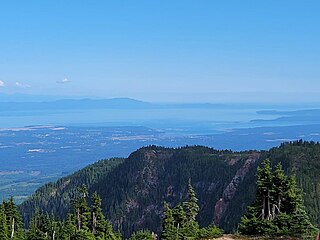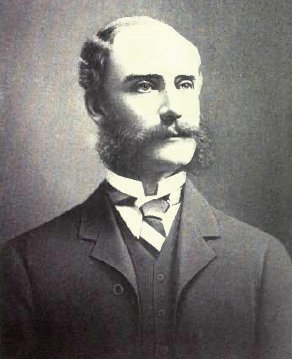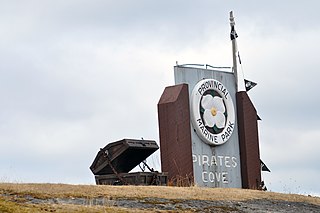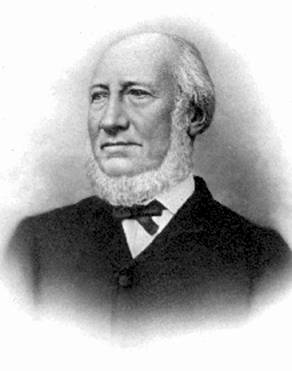Related Research Articles

Vancouver Island is an island in the northeastern Pacific Ocean and part of the Canadian province of British Columbia. The island is 456 km (283 mi) in length, 100 km (62 mi) in width at its widest point, and 32,100 km2 (12,400 sq mi) in total area, while 31,285 km2 (12,079 sq mi) are of land. The island is the largest by area and the most populous along the west coasts of the Americas.

Nanaimo is a city of about 100,000 on the east coast of Vancouver Island, in British Columbia, Canada. "The Harbour City" was previously known as the "Hub City", which was attributed to its original layout design with streets radiating from the shoreline like the spokes of a wagon wheel, and to its relatively central location on Vancouver Island. Nanaimo is the headquarters of the Regional District of Nanaimo.

Saysutshun Provincial Park, formally known as Newcastle Island Marine Provincial Park, is a provincial park located on a small island off the coast of Nanaimo, British Columbia, Canada.

The Island Rail Corridor, previously the Esquimalt & Nanaimo Railway, is a dormant railway operation on Vancouver Island and is the only remaining railway there after the closure of the Englewood Railway in November 2017. The Island Corridor Foundation owns the former Esquimalt & Nanaimo Railway corridor. The railway line is 225 kilometres (140 mi) in length from Victoria to Courtenay, known as the Victoria Subdivision, with a branch line from Parksville to Port Alberni known as the Port Alberni Subdivision at 64 kilometres (40 mi) in length, for a total 289 kilometres (180 mi) of mainline track. In 2006, the Island Corridor Foundation acquired the railway's ownership from the Canadian Pacific Railway.

Gabriola Island is one of the Gulf Islands in the Strait of Georgia in British Columbia (BC), Canada. It is about 5 kilometres (3.1 mi) east of Nanaimo on Vancouver Island, to which it is linked by a 20-minute ferry service. It has a land area of about 57.6 square kilometres (22.2 sq mi) and a resident population of 4,500.

Robert Dunsmuir was a Scottish-born Canadian businessman and politician.

Fort Victoria began as a fur trading post of the Hudson's Bay Company and was the headquarters of HBC operations in the Columbia District, a large fur trading area now part of the province of British Columbia, Canada and the U.S. state of Washington. Construction of Fort Victoria in 1843 highlighted the beginning of a permanent British settlement now known as Victoria, the capital city of British Columbia. The fort itself was demolished in November 1864 as the town continued to grow as a commercial centre serving the local area as well as trading with California, Washington Territory, the United Kingdom, and others.

The Comox Valley is a region on the east coast of Vancouver Island, British Columbia, Canada, that includes the city of Courtenay, the town of Comox, the village of Cumberland, and the unincorporated settlements of Royston, Union Bay, Fanny Bay, Black Creek, and Merville. The communities of Denman Island and Hornby Island are also considered part of the Comox Valley. The Comox Valley contains the 47th largest metropolitan area in Canada with a population of about 76,000 as of 2022.
Charles "Red" Lillard was an American-born poet and historian who spent much of his adult life in British Columbia and became a Canadian citizen in 1967. He wrote extensively about the history and culture of British Columbia, Southeast Alaska and the Pacific Northwest.

Joseph Despard Pemberton was a surveyor for the Hudson's Bay Company, Surveyor General for the Colony of Vancouver Island, a pre-Confederation politician, a businessman and a farmer. He was born in 1821 in Dublin, Ireland and died in 1893 in Oak Bay, British Columbia. Joseph Pemberton laid out Victoria's town site, southern Vancouver Island and townsites along the Fraser River. He married Teresa Jane Grautoff and they are the parents of Canadian painter Sophie Pemberton. The town of Pemberton was named after him.

The Colony of British Columbia was a crown colony in British North America from 1858 until 1866 that was founded by Richard Clement Moody, who was selected to 'found a second England on the shores of the Pacific', who was Chief Commissioner of Lands and Works for British Columbia and the first Lieutenant-Governor of British Columbia. Prior to the arrival of Moody's Royal Engineers, Columbia Detachment, the Colony's supreme authority was its Governor James Douglas, who was the Governor of the neighbouring colony of Vancouver Island.

The British Columbia Provincial Police (BCPP) was the provincial police service of British Columbia, Canada, between 1858 and 1950.

De Courcy Island is one of the Gulf Islands of the coast of southwestern British Columbia, Canada, located between the Pylades and Stuart Channels approximately 16 km (9.9 mi) southeast of Nanaimo and approximately 38 km (24 mi) west of Vancouver.
The Socialist Party of British Columbia (SPBC) was a provincial political party in British Columbia, Canada, from 1901 to 1905. In 1903, the SPBC won seats in the Legislative Assembly of British Columbia.

Valdes Island is one of the Gulf Islands located in the Strait of Georgia, British Columbia, Canada. It is across Porlier Pass from Galiano Island, which lies to the southeast. It has an area of 23 square kilometres, and is 1.6 kilometres wide by 16 kilometres in length. The island is popular with kayakers, boaters and has historically been the site of several human settlements.
Adam Grant Horne was a Hudson's Bay Company employee at the Colony of Vancouver Island, a municipal politician and a businessman. He was born in Edinburgh, Scotland and died at Nanaimo, British Columbia. He married Elizabeth Bate whose brother, Mark Bate, also an HBC employee, was the first Mayor of Nanaimo.
Walter Colquhoun Grant was British Army officer and a pioneer settler in what is today British Columbia. He served briefly as a colonial surveyor but left after a few years to rejoin the army. He died while in the service in Saugor, Bengal, India at 39.
Joseph William McKay (Mackay) (31 January 1829 – 17 December 1900) was a fur trader, businessman, politician and explorer who had a long career in the employ of the Hudson's Bay Company in Canada.

Nanaimo Lakes are a chain of four lakes composed of three natural—First, Second, and Third Lakes—and one man-made, dammed lake, Fourth Lake, on the upper Nanaimo River, on Vancouver Island in British Columbia, Canada.

David Cameron was a jurist, merchant, and manager operating across the British Empire. He was unsuccessful as a cloth merchant in Scotland and as a sugar plantation manager in Demerara, Guianas. He became a Hudson's Bay Company clerk in Nanaimo, British Columbia and then a judge in the Colony of Vancouver Island. In 1853, Cameron became the first Chief Justice of Vancouver Island, a position which he held until 1858. He served as a justice until his retirement in 1865.
References
- 1 2 John Marlowe (6 August 2009). Canadian Mysteries of the Unexplained: Investigations Into the Fantastic, the Bizarre and the Disturbing. Arcturus Publishing. p. 113. ISBN 978-1-84858-134-0.
- 1 2 Stephen Ruttan (1 April 2014). Vancouver Island Scoundrels, Eccentrics and Originals: Tales from the Library Vault. Touchwood Editions. pp. 63–65. ISBN 978-1-77151-073-8.
- ↑ British Columbia Library Quarterly. Vol. 29–30. 1965. p. 67.
- ↑ Toby Widdicombe; James M. Morris; Andrea Kross (21 June 2017). Historical Dictionary of Utopianism. Rowman & Littlefield Publishers. p. 52. ISBN 978-1-5381-0217-6.
- ↑ MacMillan, Neil (February 14, 1987). "Wardill recalls Brother XII". Nanaimo Daily News. p. 3.
- ↑ Patrick Watson (2003). The Canadians: Biographies of a Nation hlœni18 . McArthur. p. 572. ISBN 978-1-55278-390-0.
- ↑ Howard Macdonald Stewart (30 September 2017). Views of the Salish Sea: One Hundred and Fifty Years of Change around the Strait of Georgia. Harbour Publishing Company Limited. p. 424. ISBN 978-1-55017-804-3.
- ↑ Harrison, Victor Birch (1968). The Brother XII Affair (Speech). Nanaimo Historical Society Meeting. Nanaimo, B.C. Retrieved from VIUSpace.
- ↑ Jean Barman (22 June 2017). The West Beyond the West: A History of British Columbia. University of Toronto Press. p. 331. ISBN 978-1-4875-1673-4.
- ↑ Shanon Sinn (10 October 2017). The Haunting of Vancouver Island. TouchWood Editions. p. 119. ISBN 978-1-77151-244-2.
- ↑ Donald Luxton (2003). Building the West: The Early Architects of British Columbia. Talonbooks. p. 291. ISBN 978-0-88922-474-2.
- ↑ Essays on Canadian Writing. York University. 1984. p. 131.
- ↑ Johnson, Paul; Azpiri, Jon (May 12, 2019). "'He could look into your soul': The bizarre mystery behind a B.C. cult leader and his missing gold". Global News . Retrieved 2022-07-23.